How Heat Affects Your Cooking
You can have the best recipe and ingredients available in the world, but if you don’t understand how heat affects your cooking, the meal you create can easily end in disaster.
Here’s what every cook needs to know about the heat that makes cooking possible.

The Biggest Mistake Cooks Make
One of the biggest mistakes novice chefs make is not getting their ovens or pans hot enough before they start cooking. Take the time to preheat, and cooking suddenly becomes easier.
Food that is properly browned always tastes better, and it’s nearly impossible to get a good brown when the food starts out in a cold or overly hot pan or oven.
Understanding Electric Ranges
Among pros, electric ranges are frowned upon. Some even say it’s impossible to cook well with an electric range; in truth, however, you just have to understand the quirks of electric ranges.
The first thing you must know is it takes more time for the elements on an electric range to respond. Therefore, it takes longer for pans to preheat. So while you might preheat a sauté pan for a minute or two on a gas range, expect to at least double that on an electric range.
The second important point to understand is that electric ranges also cool down more slowly. So if you need to take a pan from high heat to low heat, use two burners. Preheat one on high, and preheat another on low, then move your pan from burner to burner as needed.
Understanding Gas Ranges
Gas ranges heat and cool more quickly than electric, so you’ll spend less time preheating. If you’re used to an electric range, however, watch your food closely, or you may end up burning it. If you need to simmer foods on low heat, look for a gas range with special burners designed just for doing this.
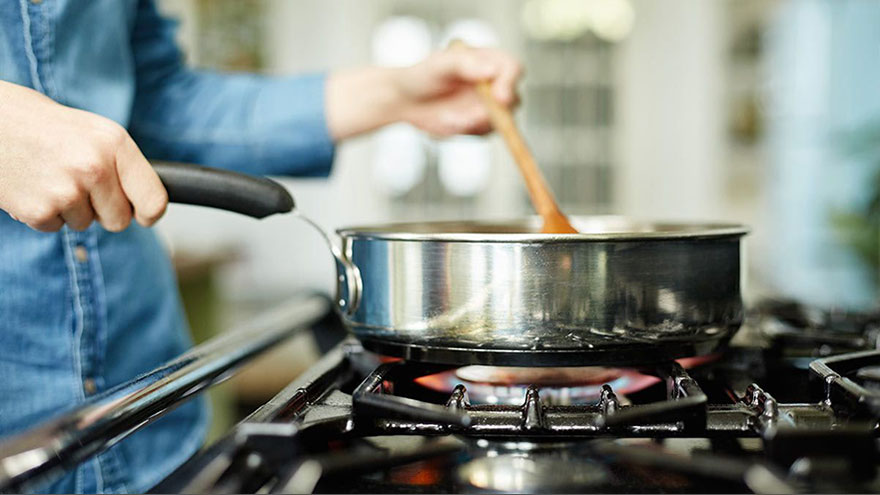
What is Grilling and Broiling
Grilling and broiling use direct heat to cook foods, which leads to a crispy outer layer. Grilling with a gas grill is really just like broiling. Neither method will add flavor to food – although charcoal grills can, and smoking with a grill can, too.
If you’re broiling and your oven requires that the oven door remain open, be sure to preheat the oven to around 500 degrees F, and only then preheat the broiler with the door open.
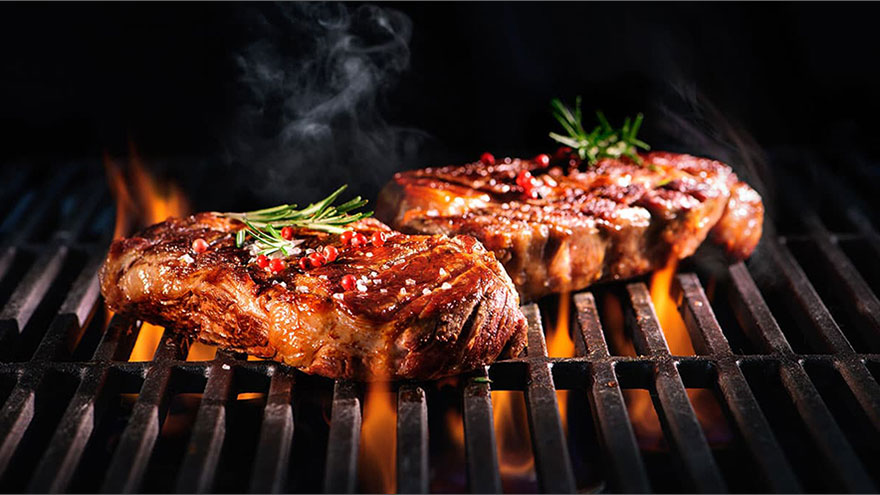
As a general rule, foods more than an inch thick aren’t a good option for direct heat grilling and broiling because they’ll get burned on the outside before they are cooked thoroughly on the inside. However, you can also use indirect heat on most grills. (This makes grilling more like roasting.) Just move the coals to one side (or lower the heat of the gas), place the food in a cool spot on the grill, and cover.
Because grilling and broiling can easily dry out foods, these methods are best for fatty foods.
What is Roasting
Roasting also uses dry heat, but because it does it in a small, contained space, it makes the outer layer of food crispy, but the inside well cooked but not burned.
Keeping the temperature low is usually the best way to roast. If the food you’re cooking isn’t fatty, be sure to baste with liquid.
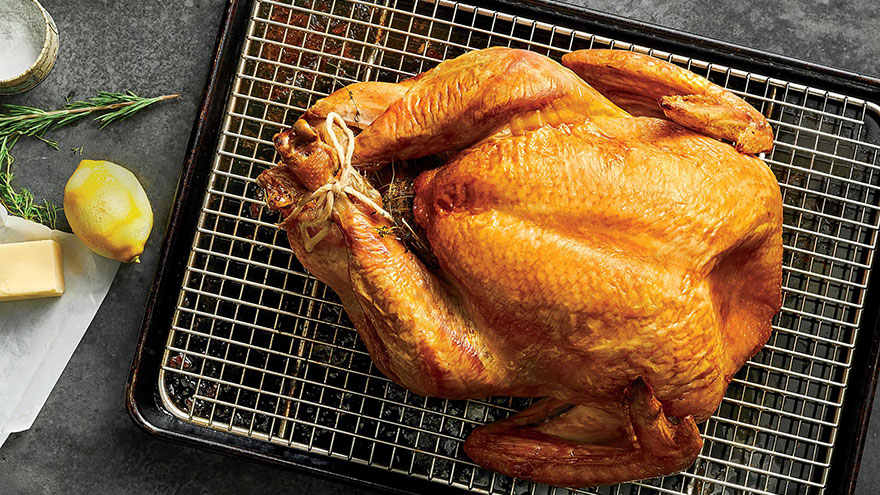
What is Sautéing and Frying
In French, sauté means “jump.” In other words, food that’s sautéed jumps into a hot pan, then jumps out soon after. Unlike other cooking methods already mentioned, there’s little risk of drying out sautéed food, even though it still offers a crispy outer layer.
Frying is similar to sautéing, except more fat is used to cook the food. A good rule of thumb is the fat must reach a temperature of 350 to 375 degrees F for it to cook the food properly and give a nice crispy outer layer.
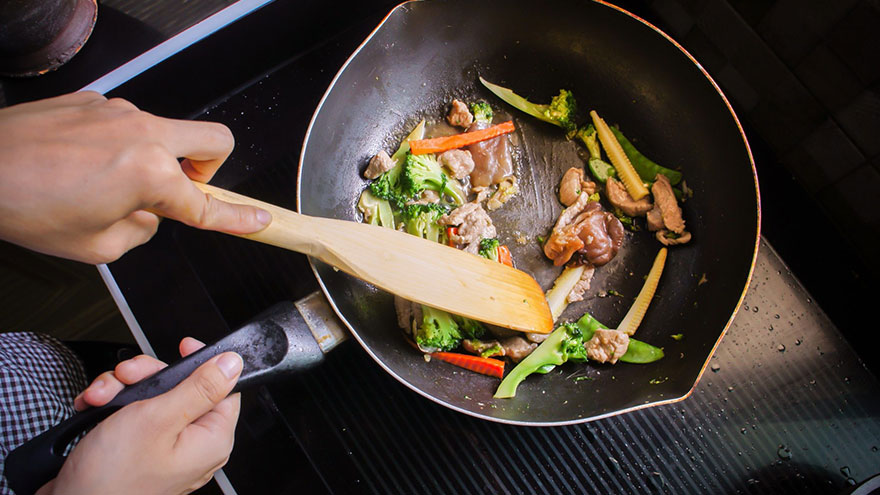
What is Braising
When braising, first the food is sautéed, then more liquid is added, and the pan is covered. Low heat is required, as is moisture (in the form of liquid inside the pan).
The longer something is braised over low heat, the more tender it will be – and the more tasty, depending upon what your liquid is.
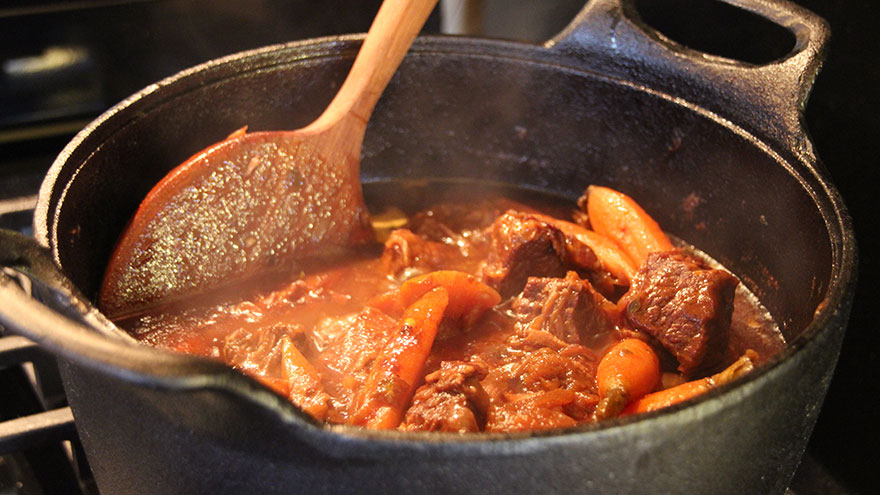
What is Poaching and Simmering
Moderate heat is required for both simmering and poaching. The liquid should bubble gently, as opposed to boil. Here, heat is controlled as much by covering the pot or pan (fully or partially) as it is by the burners.

What is Boiling
Boiling water is necessary for cooking pasta and blanching vegetables.It’s also sometimes used when steaming. In both cases, it’s best to get the water boiling before introducing the food you’re cooking.
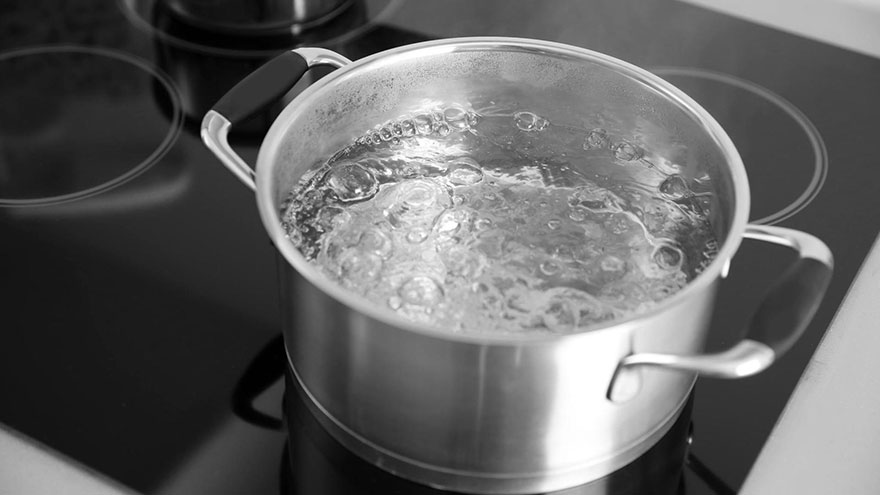
Check out the video version of this article on YouTube : How Heat Affects Your Cooking

